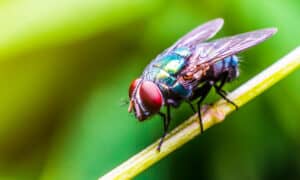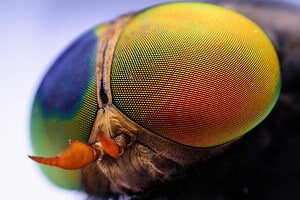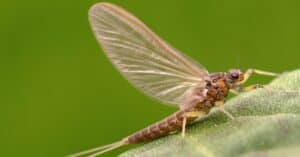Entomologists estimate there are around a million distinct species of flies within the taxonomic order Diptera. If you’re not fond of flying insects, this might sound frightening! Only around 125,000 of them have actually been formally described. Fortunately, most species are largely harmless to humans and won’t actively seek to bite us. So, which species of flies do bite, and which ones don’t? Keep reading to learn more.
Do All Flies Bite?
Out of the hundreds of thousands of species of flies that are currently known to exist, thankfully, only a small percentage of them actually bite humans. Most species feed on decaying plant matter, food waste, or animal excrement. Additionally, some will feed upon flower nectar.
Some varieties, however, have very small, razor-sharp mouthparts they can use to pierce our skin and, in most cases, suck our blood for nourishment. After sinking their mouthparts into a human or animal’s skin, many flies will inject their saliva, which has anticoagulant properties. This encourages the blood to keep flowing, providing the fly with more blood to feed upon.
In general, most fly bites are harmless or only cause minor skin irritation and redness. For people who are allergic, though, these bites can be extremely painful and annoying to treat. Certain species of flies, particularly larger varieties like horse flies, can also cause more severe, lasting pain with their biting mouthparts.
Because it’d be impossible to list every single species of fly that doesn’t bite (since most don’t bite humans), we’ll stick to covering some of the most common species that do bite. We’ll also discuss some facts about them and what to do if you get bitten.
Horse Flies
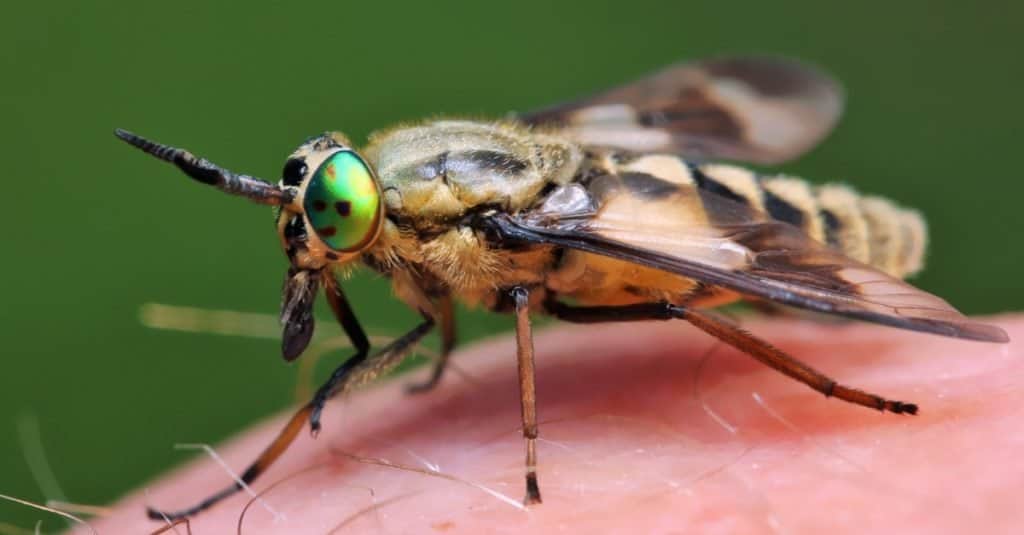
Despite their common name, horse flies actually bite a wide range of mammals, including cows, deer, dogs, rodents, and humans.
©Achkin/Shutterstock.com
Horse flies are any one of over 4,000 species within the order Tabanidae. Most species are large and clearly visible while flying and range from 0.75” to 1.25” long. They live on every continent except Antarctica. They are diurnal, so they are most active during the day and prefer well-lit areas.
Despite their common name, horse flies actually bite a wide range of mammals, including cows, deer, dogs, rodents, and humans. However, only female horse flies bite. They typically bite after mating in order to feed their fertilized eggs and reproduce. Males have much smaller and weaker mouthparts. Generally, though, horse flies prefer to feed on nectar, and many species are helpful pollinators for certain types of flowers.
If you experience a horse fly bite, you’ll likely notice a raised, reddened welt around the wound. In severe cases, other symptoms can include weakness, dizziness, wheezing, and swelling around the eyes and lips.
For people who are allergic to the saliva of horse flies, these symptoms can be very painful and irritating. Washing the wound and applying a cold compress to the area, as well as taking antihistamines, can be helpful as treatment.
Mosquitoes
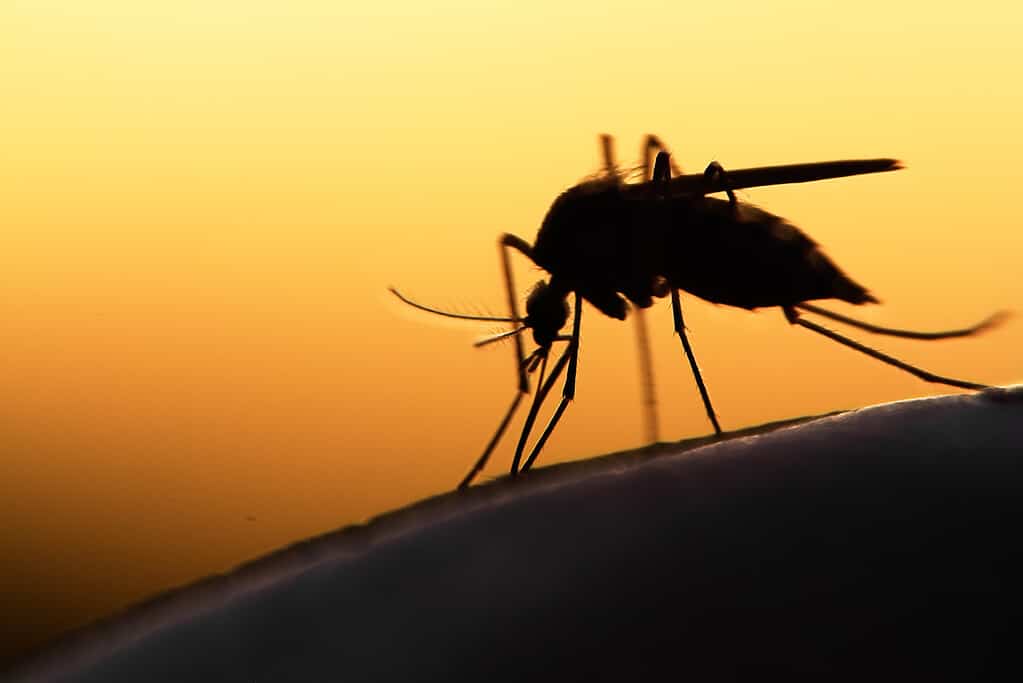
Mosquitoes are easily recognizable by their long, narrow legs and long, thin proboscis.
©mycteria/Shutterstock.com
There are around 3,600 different species of mosquitoes in the taxonomic family Culicidae. Because this family falls under the order Diptera, they are technically flies. Mosquitoes are among the most common biting insects worldwide and are major disease vectors. In most cases, though, their bites only cause minor itching, redness, and irritation that subsides in a few days.
Most varieties of mosquitoes measure just 3 to 6 millimeters in length. They are easily recognizable by their long, narrow legs and long, thin proboscis. Like horse flies, only female mosquitoes bite and feed on blood. The males’ proboscis are too small and weak to pierce most animals’ skin. Females require a blood meal in order to nourish their fertilized eggs and reproduce.
Deer Flies
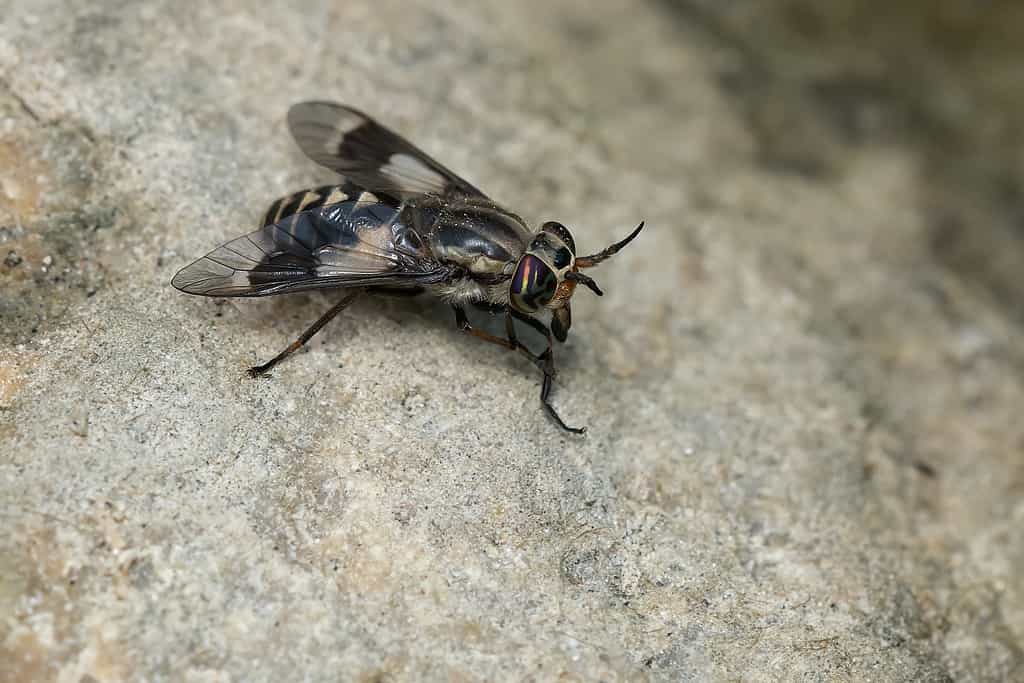
Only females of the species feed on blood, usually just before reproducing.
©Paul Reeves Photography/Shutterstock.com
Deer flies are closely related to horse flies and even belong to the same family, Tabanidae. Though they are smaller than horse flies on average, they are larger than the average house fly. Most species measure somewhere between 0.25” and 1.25” long.
True to their name, deer flies often feed on deer, as well as other mammals like horses, dogs, and cattle. Only females of the species feed on blood, though, usually just before reproducing. However, most of the time, they mainly consume nectar and pollen.
In total, there are around 33 unique genera of deer flies, with around 120 species living in North America. Also like horse flies, they can carry and spread tularemia, also known as deer fly fever. Notably, deer flies’ mouthparts are very sharp and serrated despite their small size, so their bites can be very painful to humans. Redness, irritation, itching, and swelling are all common symptoms of a deer fly bite. Cleaning the wound and applying a cold compress can help minimize these symptoms.
Black Flies
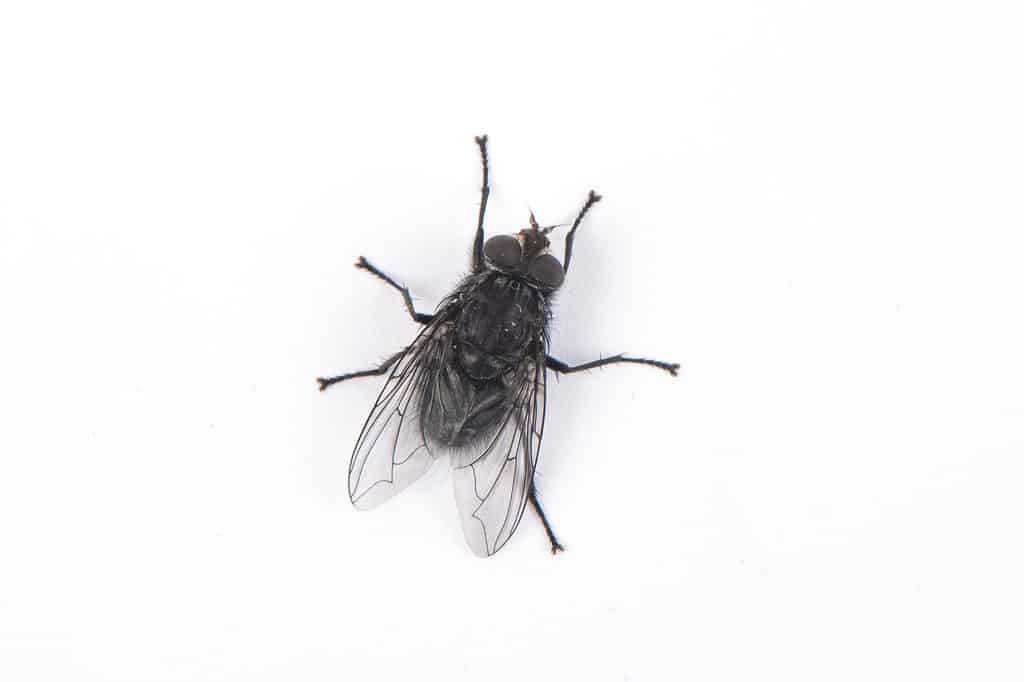
Like their common name implies, they are mostly gray or black in color and have short, stubby legs and antennae.
©iStock.com/zhikun sun
Black flies are any one of around 2,200 unique species within the taxonomic family Simuliidae. As part of the Culicomorpha infraorder, they are closely related to mosquitoes. Similar to most other species listed here, only female black flies feed on the blood of animals. Males have much smaller mouth parts that aren’t capable of piercing skin, so they mainly eat nectar.
Notably, black flies are among the smallest biting flies listed here. On average, they measure just under ⅛” long. They have wide, broad wings and an arched thorax, giving them a hump-backed appearance. Like their common name implies, they are mostly gray or black in color and have short, stubby legs and antennae.
Despite being much smaller than horse flies and deer flies, many people note black fly bites are just as painful. Their mouthparts are fairly large for their size, and they are incredibly sharp and scissor-like.
Stable/Barn Flies
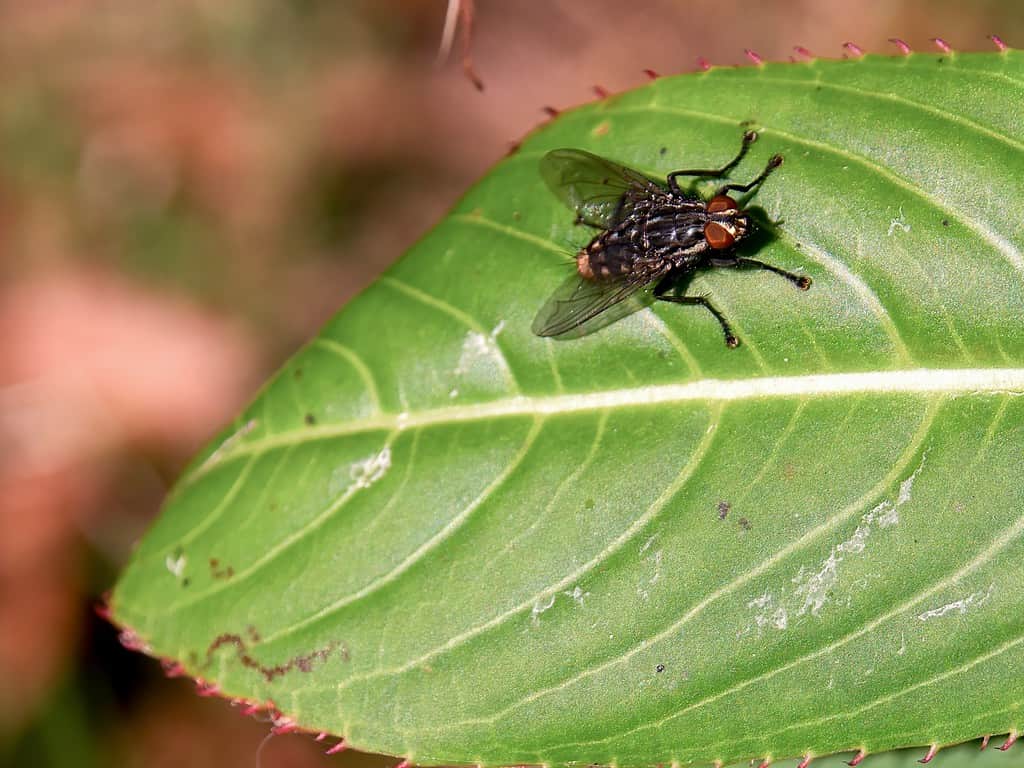
Unfortunately, while house flies are harmless to humans, the stable fly can deliver a painful bite and spread numerous diseases.
©Mauricio Acosta Rojas/Shutterstock.com
Depending on where you live, stable flies go by many common names, including barn flies, dog flies, or biting house flies. Unlike most other flies on this list, the stable fly actually belongs to a single species: Stomoxys calcitrans. It’s a member of the Muscidae family, which makes it related to the common house fly. Unfortunately, while house flies are harmless to humans, the stable fly can deliver a painful bite and spread numerous diseases.
At a glance, the stable fly closely resembles the common house fly. It measures around ¼” to ⅓” when fully grown. Upon closer examination, though, the stable fly is shorter and wider and has spots on its abdomen.
A highly aggressive species, stable flies are notorious for ignoring swatting attempts and can be very persistent when pursuing a blood meal. Both sexes of stable flies feed on the blood of animals, though females actually require blood in order to reproduce. The stable fly’s lifespan is very short. Males typically die shortly after mating, while females die soon after laying eggs.
No-See-Ums/Biting Midges
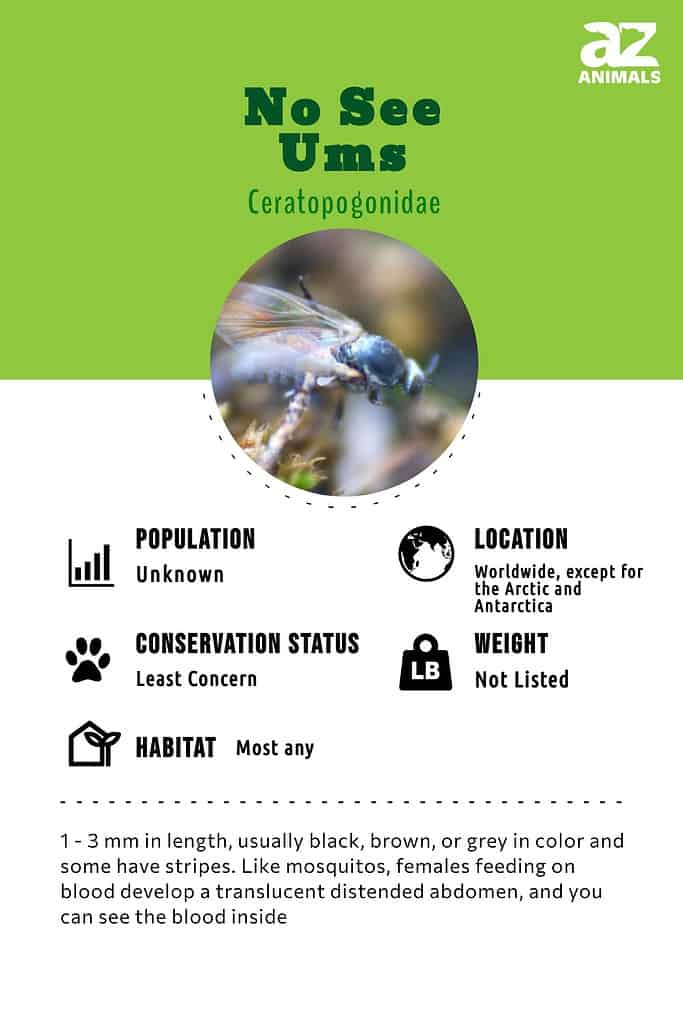
Biting midges are commonly known as “no-see-ums” due to their extremely small size. They typically measure just 1 to 3 millimeters when fully grown. This can make them very difficult to detect, and their bite can be very painful despite how small they are.
Taxonomically, biting midges are part of the family Ceratopogonidae. Additionally, they fall under the Culicomorpha infraorder, which makes them closely related to mosquitoes and black flies. There are around 5,000 total species that live virtually everywhere worldwide aside from the north and south polar regions.
Like many other species listed here, both male and female biting midges feed on nectar. Females, however, require a blood meal in order to feed their eggs and reproduce. They have very well-developed, sharp mouthparts that can pierce the skin of most mammals with ease.
No-see-um bites are small yet very painful and often cause severe itching and redness. Thankfully, like most fly bites, treatment is fairly simple in most cases and involves washing the wound, applying a cold compress, and potentially using hydrocortisone cream to ease itching. Avoid scratching the bite wound to prevent further irritation and infection.
Yellow Flies
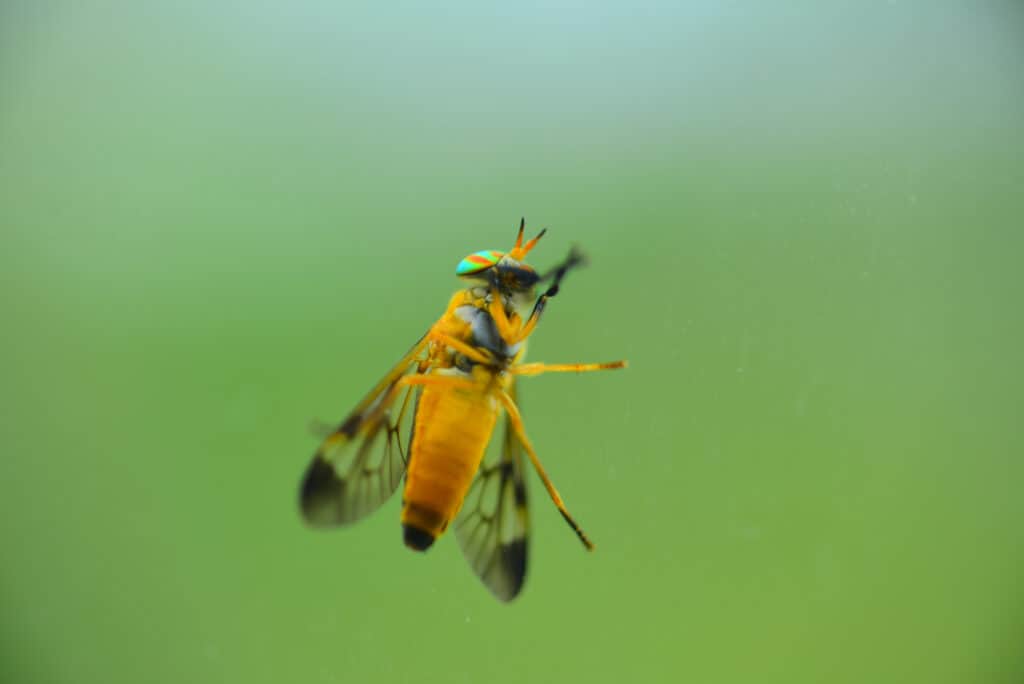
Yellow flies are highly aggressive and have extremely painful bites despite their small size.
©iStock.com/cturtletrax
The yellow fly gets its common name from its dark yellowish body color. As a member of the Tabanidae family, it is closely related to horse flies and deer flies. Only one species exists, Diachlorus ferrugatus, and it is native to Central America and the southernmost regions of North America, primarily Florida.
Yellow flies are highly aggressive and have extremely painful bites despite their small size. On average, they measure around 0.4 inches when fully grown. Unlike many other fly species, it is almost entirely silent when flying, making it difficult to avoid. It prefers warm, humid habitats near bodies of water.
The bite of the yellow fly often leaves a painful, raised, reddened welt and is said to be very itchy. Only females of the species feed on the blood of animals, while males eat nectar. DEET can be a reliable repellent, as well as wearing protective clothing that creates a physical barrier between you and the fly’s sharp mouth parts.
Snipe Flies
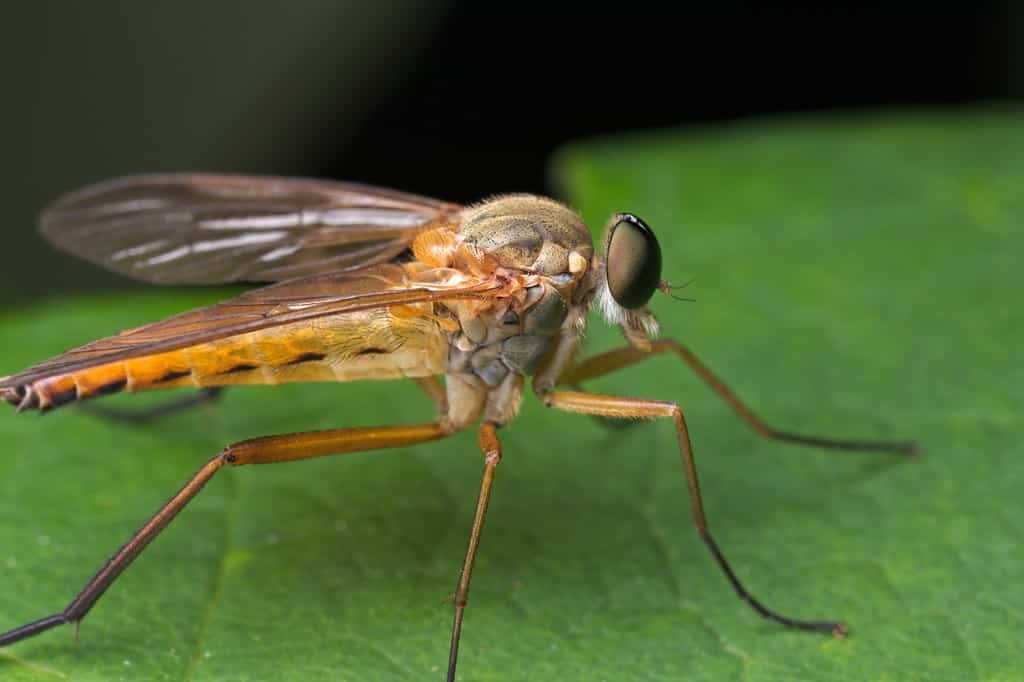
Around 40 species in the genus
Symphoromyiafeed on the blood of animals like bison, cattle, and humans, with their razor-sharp mouthparts.
©szumimydlo/Shutterstock.com
Snipe flies are any one of around 30 species within the family Rhagionidae. Their common name comes from the appearance of their long, narrow proboscis, which resembles the beak of a snipe. Most varieties of snipe flies measure around 0.3” to 0.6” in length when fully mature. They have round heads, long, narrow, tapered bodies, and even longer, narrower, highly arched legs.
Thankfully, most species of snipe flies are non-aggressive and don’t bite. However, around 40 species in the genus Symphoromyia feed on the blood of animals like bison and cattle, as well as humans, with their razor-sharp mouthparts. These species mainly live along North America’s Pacific coast. Some varieties also prey upon other, smaller insects.
Though snipe fly bites can be very painful initially, they don’t typically cause long-term irritation. Like with most fly bites, simply cleaning the bite area with warm soap and water and applying a cold compress can relieve short-term pain and itching.
The photo featured at the top of this post is © SKphotographer/Shutterstock.com
Thank you for reading! Have some feedback for us? Contact the AZ Animals editorial team.



